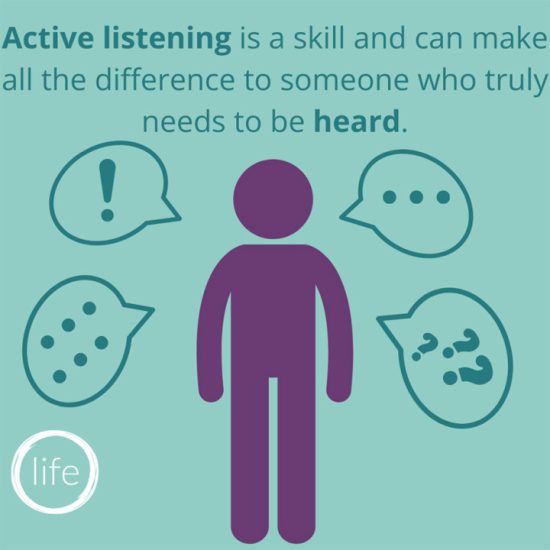Enhancing Empathy and Gaining Trust
Introduction
At the heart of counselling lies a powerful technique that builds trust, promotes empathy, and establishes a strong therapeutic alliance between the counsellor and the client: active listening.
In the world of mental health, active listening serves as a cornerstone for effective communication, guiding the way to a deeper understanding between the speaker and the listener.

Understanding Active Listening: The Key to Connection
Active listening involves fully engaging with a client while providing undivided attention and showing genuine interest in their thoughts, feelings, and experiences. Therefore it is a process that goes beyond simply hearing words; instead, it incorporates non-verbal cues, such as maintaining eye contact, nodding, and using appropriate body language, that convey empathy, understanding, and support.
The Power of Genuine Presence: Establishing Trust and Rapport
- Empathetic listening allows clients to feel valued, acknowledged, and truly heard, fostering a sense of trust and safety within the therapeutic relationship.
- By being fully present in the moment, counsellors demonstrate their commitment to understanding and validating the client’s experiences.
Non-Verbal Cues: Speaking Volumes Without Words
- Eye contact: Maintaining appropriate eye contact shows attentive listening while making the client feel respected and valued.
- Facial expressions: Expressive faces exhibit empathy and compassion, helping clients feel understood.
- Body language: Open posture, nodding, and leaning forward demonstrate interest and engagement.
Reflective Listening: Affirming and Clarifying Client Experiences
- Reflective listening involves paraphrasing and summarising what the client has shared, allowing them to feel heard and understood.
- This technique helps to correct misinterpretations and promotes a sense of clarity, which is essential for effective counselling.
Does active listening only benefit the client?
Active listening has a dual positive impact. It aids clients in feeling deeply understood and valued, while also empowering counsellors to gain profound insights into their clients’ experiences, facilitating effective interventions.
Conclusion:
Harnessing the Transformative Power of Active Listening
In the context of interpersonal and counselling skills, active listening involves a focus on feelings, helping the speaker get in touch with their own feelings, and being aware of what feelings are around for you in the process. In fact this can help the focus move from the surface issue, to underlying issues.
In the realm of counselling, active listening serves as a catalyst for healing, creating a foundation of trust, empathy, and understanding. Additionally by actively engaging with clients, counsellors foster an environment that promotes emotional well-being and personal growth.
In summary, the power of active listening in counselling enables clients to feel validated, heard, and supported, fostering a genuine transformation that paves the way for a brighter and healthier future.
In listening actively, you are not trying to solve the speaker’s problems, nor to have “words of wisdom” to give them. Rather you are helping them get in touch with, and work through, the feelings that are at the root of what is going on for them, and in doing so enable them to work out for themselves what they may want to do about it.
Only the speaker can really be sure what’s best for them.
Student Handout

Active Listening
Associated Courses:
NCFE CACHE level 2 certificate in counselling skills
NCFE CACHE Level 3 Award in Counselling Skills and Theory
Associated Topics:
The Art of Skilled Listening: Transformative Conversations in Counselling
